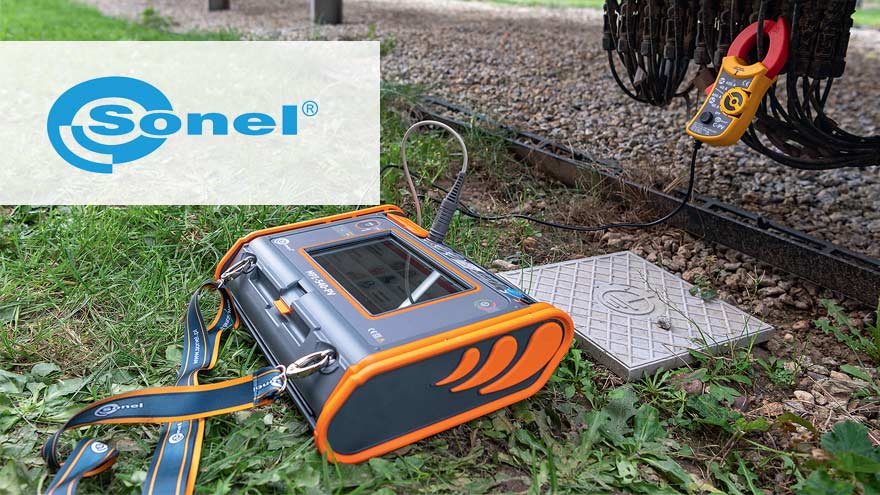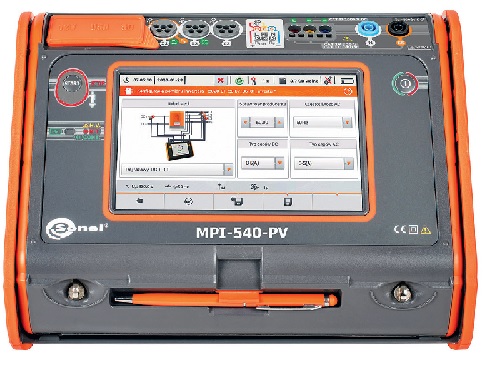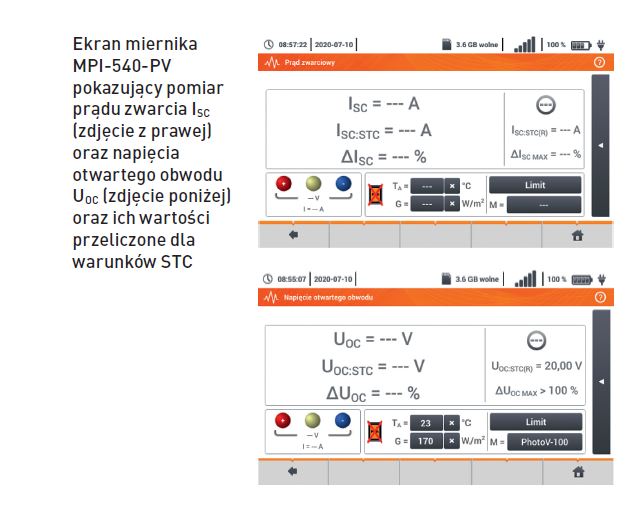The very rapid and dynamic development of photovoltaic installations that has been taking place around the world in recent years is impressive. It results largely from moving away from traditional, non-renewable energy sources. This technology is constantly developing, which reduces costs.

 Unfortunately, investment profitability is often improved by reducing the quality and, as a result, decreasing the safety level of the photovoltaic installation itself. For this reason, it is very important that after installation, the installation meets all safety requirements and that its implementation complies with applicable regulations. We can only be sure of this by carrying out appropriate acceptance and periodic tests and inspections. The legal basis here is primarily the multi-sheet standard PN-EN 62446, which defines the method and scope of safety control of photovoltaic installations. Measurements allow you to determine not only the safety, but also the effectiveness of a given installation and its components.
Unfortunately, investment profitability is often improved by reducing the quality and, as a result, decreasing the safety level of the photovoltaic installation itself. For this reason, it is very important that after installation, the installation meets all safety requirements and that its implementation complies with applicable regulations. We can only be sure of this by carrying out appropriate acceptance and periodic tests and inspections. The legal basis here is primarily the multi-sheet standard PN-EN 62446, which defines the method and scope of safety control of photovoltaic installations. Measurements allow you to determine not only the safety, but also the effectiveness of a given installation and its components.
MPI-540-PV parameter meter for electrical and photovoltaic installations
The standard divides tests into category 1 and 2 tests and additional tests. However, in order to be able to start checking at all, you need to have appropriate measuring instruments . The MPI-540-PV SONEL meter is a multifunctional meter of electrical and photovoltaic installation parameters. The device is designed to meet the requirements of the PN-EN 61557 and PN-EN 61010 standards, thus guaranteeing appropriate accuracy and safety during work. The meter offers great possibilities in testing electric shock protection and energy quality analysis; it can also be successfully used for category 1 tests, defined by the PN-EN 62446 standard, which include:
- continuity of protective connections,
- ground resistance,
- insulation resistance on the DC side,
- open circuit voltage UOC,
- short circuit current ISC,
- operating currents and powers on the DC and AC sides of the inverter,
- inverter efficiency.
 The standard requires that all tests of the receiving installation on the AC side be performed before performing Category 1 measurements. Their scope is defined by the PN-HD 60364 standard. The MPI-540-PV meter will also work in this case. By measuring the parameters of the PV installation, such as the short-circuit current ISC or the open circuit voltage UOC, you can quickly verify the correctness of the module connections in the string, their correct polarization and operation. Measurements can be performed for the entire panel chain or for a single module. The manufacturer usually provides the parameters of individual elements of the PV installation measured under STC (Standard Test Conditions). For comparison purposes, the meter can automatically convert the results to STC conditions. In this case, you should also save the catalog parameters of photovoltaic panels in the module database located in the device. It is also necessary for calculations and to evaluate the measurement result. Continuity of protective connections and earthing resistance on the DC side will be measured in the same way as in AC receiving installations. In the case of insulation resistance tests, however, the difference is that the measurements are performed under voltage, so special care must be taken.
The standard requires that all tests of the receiving installation on the AC side be performed before performing Category 1 measurements. Their scope is defined by the PN-HD 60364 standard. The MPI-540-PV meter will also work in this case. By measuring the parameters of the PV installation, such as the short-circuit current ISC or the open circuit voltage UOC, you can quickly verify the correctness of the module connections in the string, their correct polarization and operation. Measurements can be performed for the entire panel chain or for a single module. The manufacturer usually provides the parameters of individual elements of the PV installation measured under STC (Standard Test Conditions). For comparison purposes, the meter can automatically convert the results to STC conditions. In this case, you should also save the catalog parameters of photovoltaic panels in the module database located in the device. It is also necessary for calculations and to evaluate the measurement result. Continuity of protective connections and earthing resistance on the DC side will be measured in the same way as in AC receiving installations. In the case of insulation resistance tests, however, the difference is that the measurements are performed under voltage, so special care must be taken.
The values of operating currents and power on the DC and AC sides must be checked while both installations are in operation. Based on these measurements, we will verify the efficiency of the inverter and compare it with the efficiency declared by the manufacturer. The results saved to the meter's memory can be further used in the report. A dedicated program for this purpose will be useful here: Sonel Electrical Measurements 6. Together with the entire range of equipment and measurement capabilities, the meter is a valuable tool in the work of a measurement specialist. It will be especially appreciated by electrical installers who perform acceptance measurements in electrical and photovoltaic installations.
Tomasz Gorzelańczyk
SONEL SA
